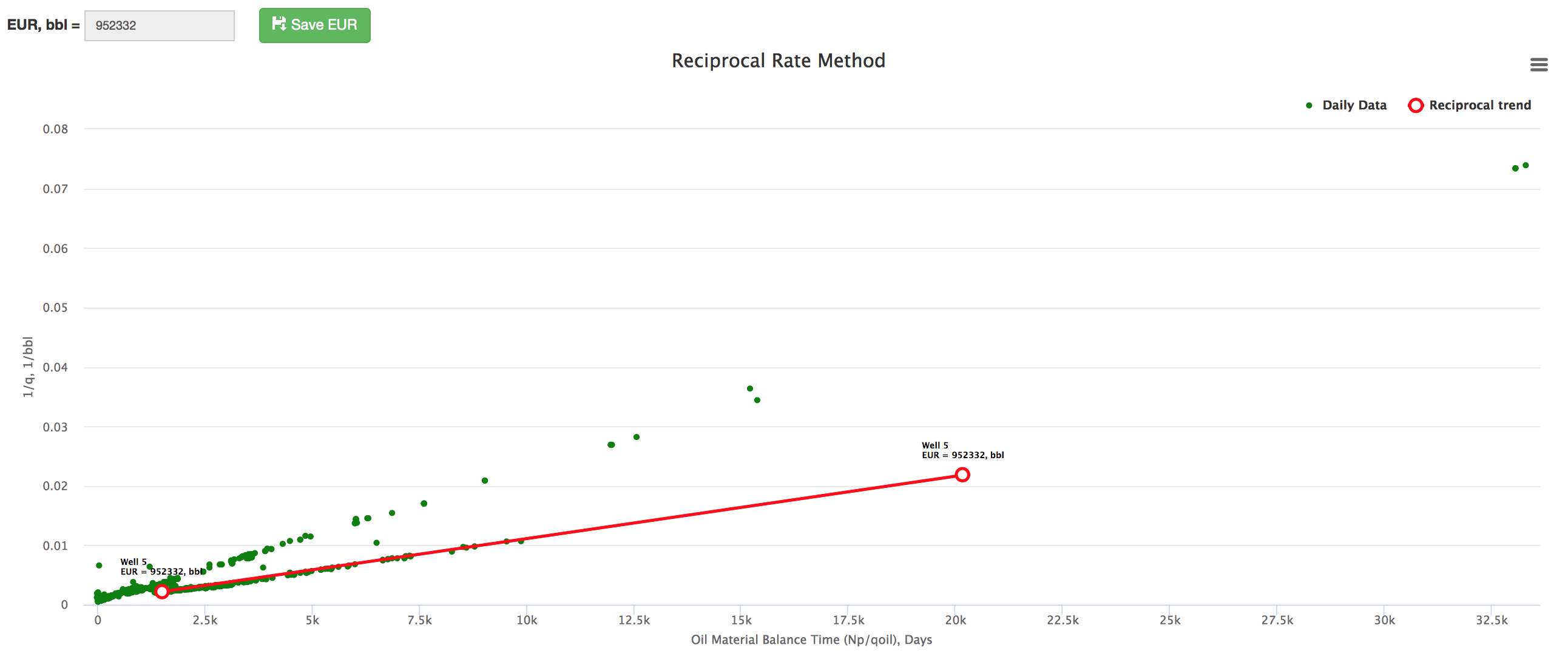Difference between revisions of "Reciprocal Rate Method"
From wiki.pengtools.com
(→Brief) |
|||
| Line 5: | Line 5: | ||
The interpretation technique is fitting the data points with the straight line to estimate the slope which gives [[EUR]]. | The interpretation technique is fitting the data points with the straight line to estimate the slope which gives [[EUR]]. | ||
| + | |||
| + | [[File:ReciprocalRateMethod.png|link=https://ep.pengtools.com/reciprocal/reciprocal-method/well-reciprocal-rate?WellFilter%5Bfield_id%5D=&WellFilter%5Bfield_id%5D%5B%5D=11&WellFilter%5Bshop_id%5D=&WellFilter%5Bpad_id%5D=&WellFilter%5Bwell_id%5D=25214]] | ||
== References == | == References == | ||
Revision as of 17:00, 28 May 2018
Brief
Reciprocal Rate Method - is the method to estimate oil Wells and Reservoirs EUR using only rate-time production data[1] published in 2007 by Thomas Blasingame et al.
The methodology does presume that flowing well bottomhole pressures are approximately constant[1].
The interpretation technique is fitting the data points with the straight line to estimate the slope which gives EUR.
References
- ↑ 1.0 1.1 Blasingame, Thomas Alwin; Ilk, Dilhan; Reese, Parker D. (2007). "Estimation of Reserves Using the Reciprocal Rate Method"
 (SPE-107981-MS). Society of Petroleum Engineers.
(SPE-107981-MS). Society of Petroleum Engineers.

